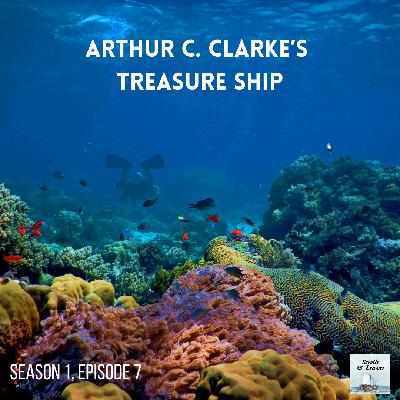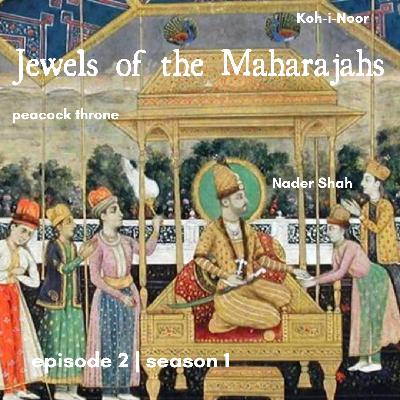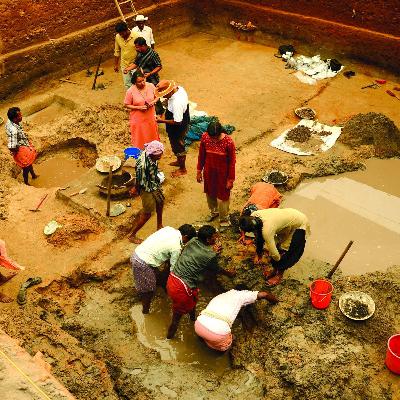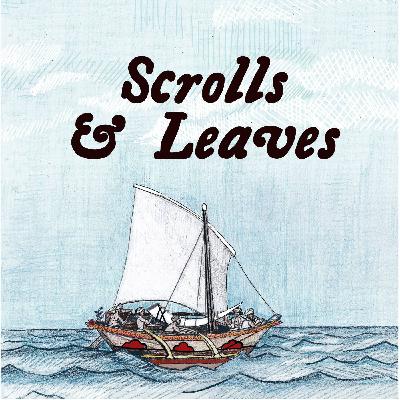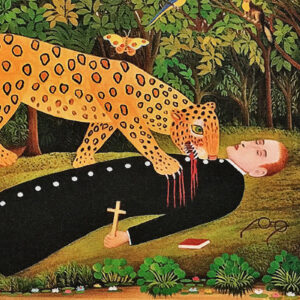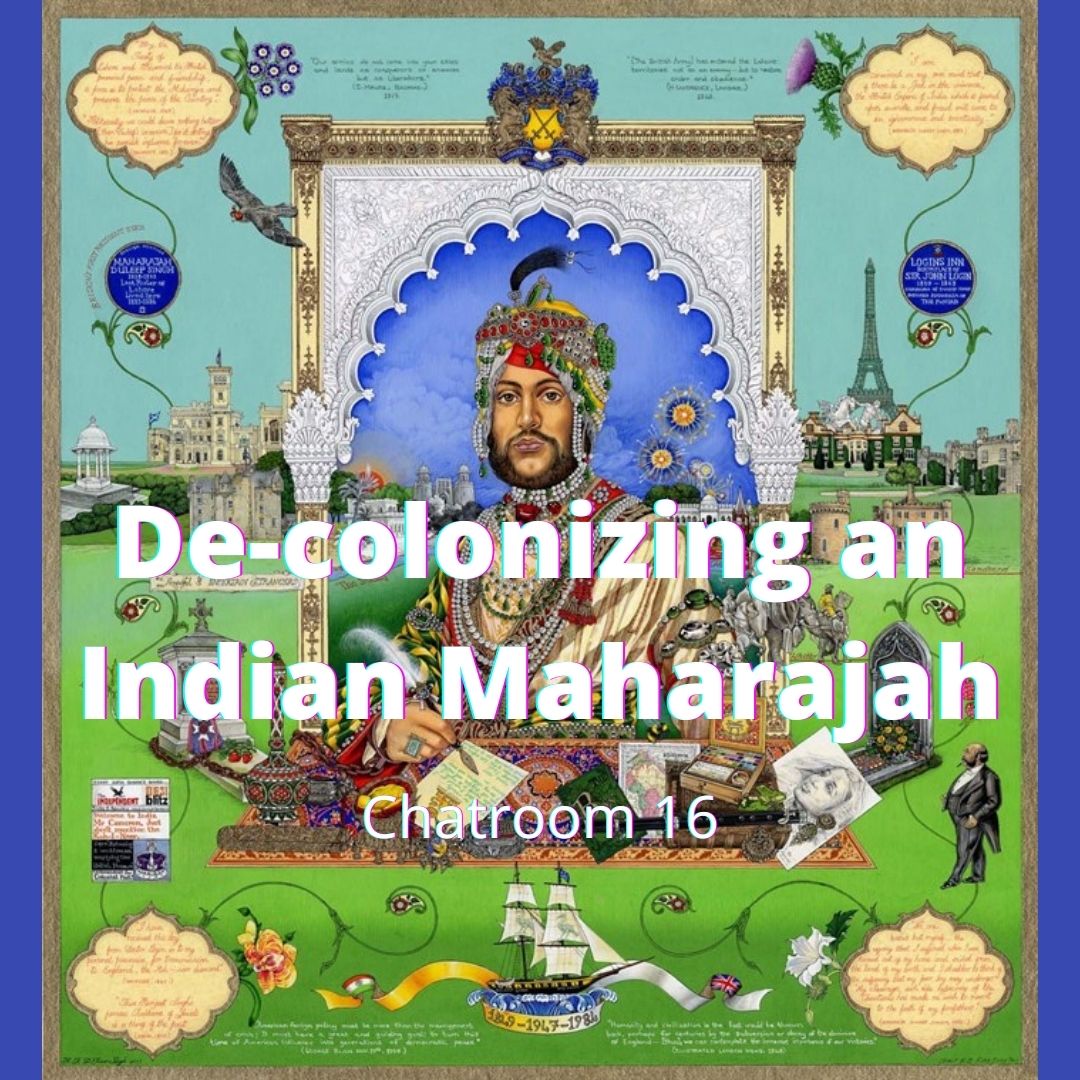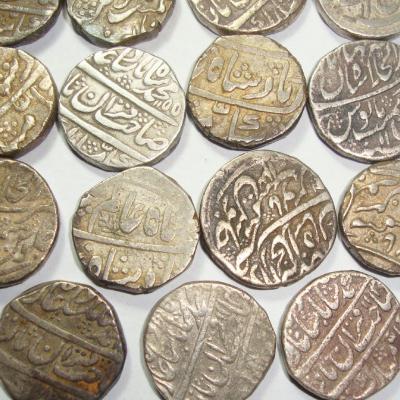Discover Scrolls & Leaves: World History Podcast
Scrolls & Leaves: World History Podcast

Scrolls & Leaves: World History Podcast
Author: Scrolls & Leaves Podcast
Subscribed: 46Played: 315Subscribe
Share
© Scrolls & Leaves Podcast
Description
Epic histories from the Indian subcontinent, through the eyes of the marginalized. Hear about ruthless emperors, cunning corporations that colonized half the world, a world-renowned sci-fi writer who stumbled on a treasure ship, and other stories from history, science and cultures. Journalists Gayathri Vaidyanathan and Mary-Rose Abraham reflect on how these histories define our present. Made in 3-D sound to immerse you in the past.
35 Episodes
Reverse
In the treacherous Great Basses Reef in Sri Lanka, renowned author Arthur C. Clarke finds a submerged treasure ship with a hoard of silver coins
In a windswept mountain pass, more than a hundred years ago, a towering Afghan man hacks a Scottish trader to death. Then the killer disappears. A British officer is determined to track him down and rides along the old Silk Route into western China. No sign of the killer but he does encounter a book of Ayurveda unearthed in the nearby desert. The Sanskrit lettering details the power of Healing Plants.
Throughout history, plants have yielded a range of medical remedies. Neem leaves so bitter they wash the worms out of stomachs in Indus Valley cities four thousand years ago. Complex Ayurveda concoctions of spices and herbs to ward off disease. Or the pills and injections of modern pharmaceuticals, a quarter of which derive from plants.
But plants are more than medicine. They have driven exploration, empires and colonization. Europe’s insatiable demand for spices and botanical remedies creates pipelines of plunder and trade across the world. As the bedrock of the pharmaceutical industry, the transformation of plants has sometimes overthrown millennia of indigenous medical wisdom.
“Healing Plants” traces the journey of plants as medicine and commodities from ancient times to the present. As you reach for that tablet in your medicine cabinet, perhaps there are echoes of its healing properties in a makeshift book found in the desert along the Silk Road.
When the British Empire abolished slavery in 1833, it found that African slaves would much rather not work on its colonial plantations -- even for a salary. It had to find a new source of labourers and hired workers from India, Java, China and elsewhere. India, especially, was a major source of indentured labour as it was a British colony.
In this episode, we recount the tale of Mangre Lal, a man in his 20's from Bahraich, who goes to Fiji. We hear his story through his grandson Brij Lal, a world-renowned Indo-Fijian historian. After two-three generations, Indo-Fijians found themselves in the ruling party in Fiji in the '80s. But ethnic divisions have resulted in multiple coups as native Islanders have struggled to assert their dominance. Indo-Fijian Australian comedian Umit Bali recounts what it was like to live in Fiji in the '90s.
Lal, who has been a vocal critic of the government, was exiled from Fiji. But he refuses to recant his criticism, even if it means he can never again visit the land of his birth.
The world’s borders are clamping down for un-vaccinated people, most of whom are poor and/or from the Global South. This echoes events following a 19th century pandemic of cholera which killed millions of people worldwide. The colonial power improved water and sanitation in their European and American cities, but left their colonies undeveloped. They instead set up surveillance and border control to keep disease within those faraway borders. The race-based policies can be traced to present day.
The ‘Curse of the Kohinoor’ is this: Any man who wears the diamond will suffer a terrible fate. But is this true? Or was this simply a story that conveniently allowed the British Empire to justify the colonial appropriation of the diamond?
Maharaja Ranjit Singh was the last Indian owner of the Kohinoor diamond. He was a fair and secular king -- one of the greatest rulers of all time. When he dies in 1839, his 9-year-old son Duleep Singh takes over the throne. The British East India Company is watching like a vulture, and conquers the Empire through treachery. It plunders the immense wealth of the kingdom, unravels the socioeconomic fabric of the state, separates the 9-year-old King from his mother-- and present him and the Kohinoor as trophies to Queen Victoria. This is the 'cursed' history of the Kohinoor that is conveniently forgotten by the British today. So is the diamond cursed? Listen to find out!
The Jewels of the Maharajas symbolized power and a connection with the divine. Anyone who wanted to be a greater ruler would want them as a symbol of sovereignty. In 18th century Persia, there was a great King who wanted to rule all of Asia. This is the story of Nader Shah and his quest for the legendary Koh-i-Noor diamond and other jewels of the Mughals. Please use headphones to hear immersive sound.
For more than a decade, archaeologists have been searching for the lost port of Muziris on the southwest coast of India. Incredible finds point to maritime trade and links with many ancient cultures, including the Roman Empire: amphorae, semi-precious stones and beads, intaglios, and pottery from throughout the Indian Ocean world. Join us on a visit to a sleepy village in Kerala to learn more about these artifacts and whether this site really is the lost port of Muziris.
Not many people know of histories from the majority world, where 80% of all people live. We will tell you some of these stories in Season 1, Trade Winds. Each episode tells a story set on the Indian Ocean as global civilizations connect with South Asia. Hear about the episodes coming up this season.
British scientist Sir Ronald Ross tries to stops a deadly cholera outbreak in 1895 Bangalore. He applies learnings from the new field of epidemiology
Can the great divide between Ayurveda and modern science ever be bridged? We talk to biologist Annamma Spudich who's studied traditional medicine.
Cartoonist Arghya Manna is one of the few people who portray the history of Indian science using comics. We talk to him about creating art during Covid-19, and the Great Bengal Famine.
From the mountains of Central Asia comes a musical form that borrows extensively from Nature. In this episode, we talk to Tuvan vocalist and composer, Saylyk Ommun, about Tuvan throat singing and its links with the natural world and modern genres like rock.
Friederike Voigt , the curator of South Asia at the National Museum of Scotland, has been on a decade-long quest to investigate and restore the histories to objects in the museum that speak of colonization. In this episode, we discuss the objects and history of Maharaja Duleep Singh, the last King of the Sikh Empire -- and how he's represented in two paintings by artists who come from drastically different backgrounds.
From the deep mines of South America, tons of silver travel to Mughal India to fill the coffers of Emperors with precious coins






